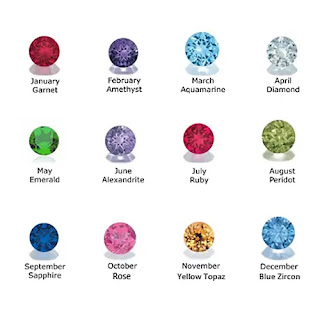IMITATION gems have the appearance Lot their natural counterparts, but their physical properties are different. They are made to deceive. Man-made materials, such as glass and synthetic spinel, have been used to imitate many different also be modified to resemble more valuable gems. It is possible to enhance authentic gemstones by hiding cracks and flaws, or by heat-treating or irradiating to improve their color.
GLASS IMITATIONS
Glass has been used for centuries to imitate gemstones. It can be made either transparent or opaque, in almost any color, and, like many gems, has a vitreous lustre. At first sight, therefore, it may easily be mistaken for the real thing. However, it can usually be detected by its warmer feel, and by the evidence of wear and tear that results from its greater softness. Chipped facets and internal swirls and bubbles are common. In addition, unlike most of the gems it imitates, glass is singly refractive.
Opal Imitations
Gemmologists call the flashes of color in opal its "play of color", or iridescence. It is caused by the interference of light from the minute spheres of silica gel that make up the gem. This structure is imitated to great effect in opals made by the French manufacturer, Gilson, although the difference can be seen in the mosaic-like margins of the patches of color. There are various other opal imitations, including stones made of polystyrene latex, or of different pieces assembled as one. In an opal “doublet" (two pieces) the top is natural precious opal, but the base is common (potch) opal, glass, or chalcedony. A "triplet" (three pieces) has an additional protective dome of rock crystal.
SLOCUM STONES
The American John Slocum developed imitation opals with a convincing play of color, but they lack the silky, flat color patches of genuine opal, and the structure looks crumpled when magnified.
GARNET-TOPPED DOUBLET
One of the most common "composite" stones (stones made of more than one piece) is the garnet-topped doublet, or GTD. A thin section of natural garnet is cemented to a colored glass base, which gives the GTD its apparent color. The deception is most easily seen at the junction of the two layers, which may be obvious.
DIAMOND IMITATIONS
Many natural materials have been used to imitate diamond, but zircon is the most convincing. Synthetic imitations are popular, but each has its faults (right). Imitations can usually be detected by testing the heat conductivity of the stone.
HEAT TREATMENT
Heating may enhance or change the color or clarity of some gems. Techniques range from throwing gems in a fire to "cook", to use of sophisticated equipment. The outcome is certain for some gems (like aquamarine, changing from green to blue), but less so for others.
STAINING
Stains, dyes, or chemicals can alter the appearance of a gem, coating just the surface, or changing the whole specimen. For staining to be effective, a stone must be porous or contain cracks and flaws through which the color can enter. Porous white how lite, for ex- ample, can be stained to imitate turquoise.
OILING
Oils may enhance a gem's color and disguise fissures and blemishes. It is common to oil emeralds in order to fill their natural cracks and flaws.





































